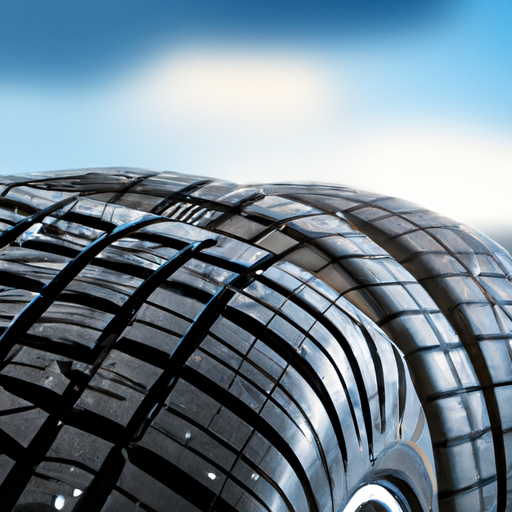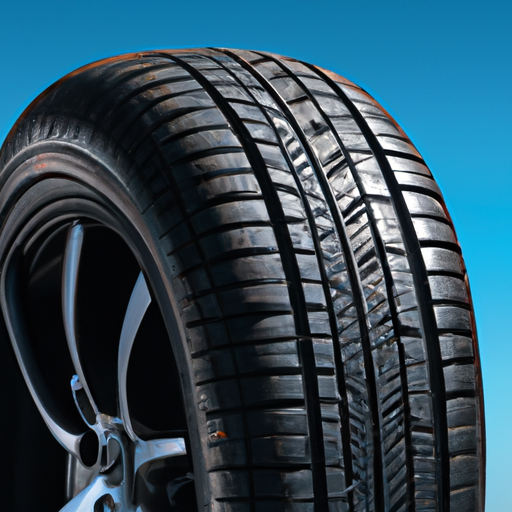Imagine driving along a winding coastal road on a beautiful summer day – the sun is shining, the windows are down, the wind is in your hair. As you navigate each curve with precision and ease, you can’t help but wonder – how do summer tires enhance handling and performance in such a remarkable way? Well, the answer lies in their specialized design and unique rubber compound, which allows for optimal grip, responsiveness, and stability on warm and dry road surfaces. In this article, we will explore the fascinating world of summer tires and uncover the secrets behind their ability to elevate your driving experience to a whole new level.

1. What are summer tires?
1.1 Definition of summer tires
Summer tires, also known as performance tires, are specifically designed to provide optimal performance and handling in warmer weather conditions. Unlike all-season or winter tires, which cater to a wider range of temperatures and road conditions, summer tires are engineered with specific characteristics to excel in hot and dry conditions.
1.2 Characteristics of summer tires
Summer tires have several distinguishing features that set them apart from other types of tires. These include:
-
Tread Patterns: Summer tires typically have a unique tread pattern that is designed to maximize traction on dry roads. The tread blocks are often larger and more rigid, allowing for better grip and stability during acceleration, cornering, and braking.
-
Rubber Compound: The rubber compound used in summer tires is formulated to be softer and stickier, providing increased traction on hot pavement. This softer rubber also allows for better responsiveness and enhanced grip in dry conditions.
-
Increased Road Contact: Summer tires often have wider tread widths and larger contact patches, ensuring more rubber is in contact with the road surface. This results in improved grip and traction, allowing for better control and maneuverability.
-
Hydroplaning Resistance: Summer tires have specialized tread designs and grooves that are engineered to effectively channel water away from the tire’s contact patch, reducing the risk of hydroplaning. This feature enhances safety on wet roads and decreases the chances of skidding or losing control.
2. Importance of selecting the right tires
2.1 Understanding the impact of tires on handling and performance
Selecting the appropriate tires for your vehicle is crucial as they play a significant role in determining your car’s handling and overall performance. Tires act as the interface between your vehicle and the road, and their characteristics directly influence how your car responds in various conditions. Summer tires, with their specialized design and construction, can greatly enhance your driving experience during the warmer months.
2.2 Suitability of summer tires for warmer climates
One of the primary reasons to opt for summer tires is if you live in a region with predominantly warm weather. Summer tires are specifically engineered to perform optimally in high temperatures, providing superior grip, traction, and control on hot and dry roads. Using summer tires in these conditions can greatly enhance your safety and enjoyment while driving.
3. Enhanced grip and traction
3.1 Unique tread patterns
The tread patterns of summer tires are carefully designed to maximize grip and traction on dry surfaces. The larger tread blocks and unique patterns provide increased surface area in contact with the road, allowing for better grip during acceleration, cornering, and braking. These tread patterns also contribute to improved handling and stability, enhancing your overall driving experience.
3.2 Rubber compound composition
The rubber compound used in summer tires is formulated to be softer and stickier, ensuring optimal traction on hot pavement. This soft compound allows the tires to grip the road surface more effectively, resulting in enhanced handling and performance. The softer rubber also enables better responsiveness, allowing for quick and precise steering inputs.
3.3 Increased road contact
Summer tires often have wider tread widths and larger contact patches, which means more rubber is in contact with the road. This increased road contact translates to improved traction, particularly during acceleration and cornering. The additional grip provided by summer tires enhances your ability to maintain control of your vehicle, even during aggressive driving maneuvers.
3.4 Resistance to hydroplaning
One of the key advantages of summer tires is their resistance to hydroplaning. Hydroplaning occurs when a layer of water builds up between the tires and the road surface, resulting in a loss of traction and control. Summer tires are designed with specialized tread patterns and grooves that effectively channel water out from under the tires, reducing the risk of hydroplaning. This trait significantly enhances safety on wet roads, allowing for confident and controlled driving.
4. Improved cornering and maneuverability
4.1 Stiffer sidewalls
Summer tires often feature stiffer sidewalls compared to other types of tires. This increased rigidity enhances the tire’s ability to maintain its shape during cornering and maneuvering, resulting in improved stability and control. The stiffer sidewalls also provide better feedback to the driver, allowing for a more precise and connected driving experience.
4.2 Better responsiveness
Due to their softer rubber compound and unique tread patterns, summer tires offer superior responsiveness. This means that when you turn the steering wheel, the tires respond quickly and precisely, allowing for sharper and more accurate cornering. The enhanced responsiveness of summer tires can greatly enhance your driving enjoyment and confidence, especially during spirited driving or on twisty roads.
4.3 Enhanced lateral stability
Summer tires excel in providing exceptional lateral stability, particularly during high-speed maneuvers. The combination of their unique tread patterns, softer rubber compound, and stiffer sidewalls enables them to maintain optimal grip and control when taking corners at higher speeds. This enhanced lateral stability allows you to navigate curves and bends with confidence and precision, maximizing your driving experience.

5. Enhanced braking performance
5.1 Shorter braking distances
One of the most crucial aspects of tire performance is braking ability, and summer tires excel in this area. The unique tread patterns, softer rubber compound, and larger contact patches all contribute to shorter braking distances on dry roads. When you apply the brakes, summer tires provide increased grip and traction, allowing your vehicle to come to a stop more rapidly. This enhances safety and reduces the risk of accidents, especially during sudden braking situations.
5.2 Increased braking efficiency
In addition to shorter braking distances, summer tires also exhibit increased braking efficiency. The specialized rubber compound used in summer tires allows them to generate more friction between the tire and the road, even in high-temperature conditions. This increased friction translates to more effective braking, providing you with peace of mind and confidence when you need to slow down or stop.
6. Reduced rolling resistance
6.1 Decreased energy consumption
Summer tires are designed to have lower rolling resistance compared to other tire types. Rolling resistance refers to the energy required to keep the tires rolling, and lower rolling resistance means less power is needed to move the vehicle. This leads to decreased energy consumption and improved fuel efficiency. By reducing the amount of energy lost to rolling resistance, summer tires help you save money on fuel costs while also reducing your carbon footprint.
6.2 Enhanced fuel efficiency
Because summer tires have lower rolling resistance, they allow your vehicle’s engine to work more efficiently. The reduced resistance means less effort is required to propel the vehicle forward, resulting in improved fuel efficiency. By opting for summer tires, you can enjoy better gas mileage, ultimately saving money and minimizing your impact on the environment.

7. Handling on wet surfaces
7.1 Effective water dispersion
While summer tires offer exceptional performance in dry conditions, they also have features that enhance their handling on wet surfaces. The specialized tread patterns and grooves in summer tires are designed to effectively disperse water and minimize the risk of hydroplaning. This allows the tires to maintain contact with the road, providing better traction and grip even in wet conditions.
7.2 Improved wet traction
In addition to effective water dispersion, summer tires also have a softer rubber compound that can maintain good traction on wet roads. While not as effective as dedicated winter tires in extremely wet or snowy conditions, summer tires can still provide satisfactory performance when encountering light rain or wet pavement. The combination of their unique features ensures that you can confidently handle wet driving conditions without compromising safety or control.
8. Limits of summer tires
8.1 Reduced performance in colder temperatures
As the name suggests, summer tires are specifically designed for warmer weather conditions. When temperatures drop below 45°F (7°C), the rubber compound in summer tires begins to lose its flexibility and grip. This reduction in performance can result in decreased traction, longer braking distances, and overall compromised handling on cold or icy roads. It is important to switch to winter or all-season tires when driving in colder temperatures to ensure optimal safety and performance.
8.2 Limited ice and snow traction
Summer tires are not the ideal choice for driving in icy or snowy conditions. Their tread patterns and rubber composition do not provide the necessary grip and traction needed on slippery surfaces. If you live in a region with harsh winters or frequently encounter icy or snowy roads, it is advisable to switch to dedicated winter tires that are specifically designed to excel in these conditions. Winter tires have specialized tread designs and rubber compounds that enhance grip and maintain traction in cold, icy, and snowy environments.

9. Proper maintenance and care
9.1 Regular tire inspections
To ensure the optimal performance and longevity of your summer tires, it is important to conduct regular tire inspections. This includes visually examining the tires for any signs of damage, such as cuts, bulges, or uneven wear. Regular inspections allow you to identify and address any issues promptly, ensuring your tires are in good condition and safe to use.
9.2 Maintaining proper tire pressure
Maintaining the correct tire pressure is crucial for both safety and performance. Improperly inflated tires can lead to decreased traction, compromised handling, and excessive tire wear. It is important to check and adjust the tire pressure according to the manufacturer’s recommendations regularly. Properly inflated summer tires will provide the best performance and longevity while ensuring your safety on the road.
9.3 Rotating tires
Regularly rotating your tires helps to promote even wear and extend their lifespan. Summer tires, like any other tires, can wear unevenly due to various factors, such as vehicle weight distribution and driving habits. By rotating the tires at regular intervals, you can help ensure that each tire wears evenly, maximizing their performance and longevity.
9.4 Storing tires appropriately
If you live in an area with distinct seasons and need to switch to winter tires during colder months, it is important to store your summer tires properly. This includes cleaning the tires thoroughly, ensuring they are completely dry, and storing them in a cool, dry, and dark place. It is also advisable to protect the tires from direct sunlight and extreme temperatures. Proper storage preserves the condition of your summer tires and ensures they will be ready for use when the warmer weather returns.
10. Conclusion
Choosing the right tires for your vehicle is essential for achieving optimal handling and performance, especially during the summer months. Summer tires offer a range of advantages, including enhanced grip and traction, improved cornering and maneuverability, superior braking performance, reduced rolling resistance, and efficient handling on wet surfaces. However, it is important to be aware of the limits of summer tires, such as reduced performance in colder temperatures and limited ice and snow traction. By properly maintaining and caring for your summer tires, you can maximize their performance and lifespan, ensuring a safe and enjoyable driving experience throughout the summer season.


